Swamps are a unique type of wetland ecosystem, and they’re found throughout the United States. While they’re certainly more common in the South, swamps are also found in states like Ohio. These ecosystems range in size from a few square miles to hundreds of square miles. Discover five of the largest swamps in the United States and learn where they’re located as well as their size!
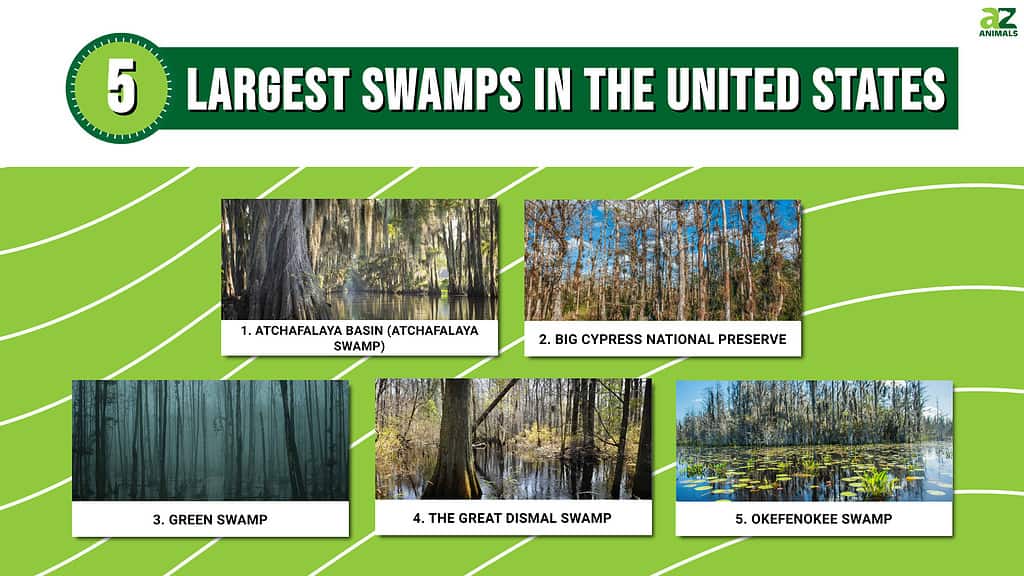
What Is A Swamp?
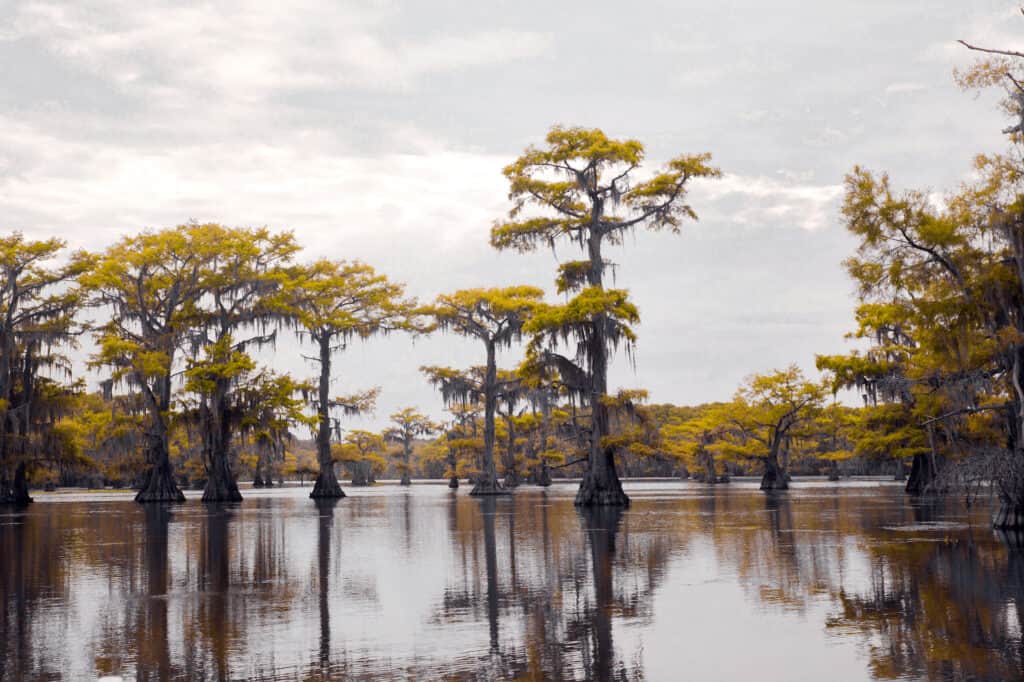
Swamps have standing water at some point throughout the year.
©MeganTea/Shutterstock.com
Before learning about some of the largest swamps in the United States, it is important to know what makes swamps unique. That way, general wetlands don’t take over the list of the biggest swamps.
A swamp is a wooded wetland featuring trees and bushes with saturated soils and standing water at some times throughout the year. Inland freshwater swamps tend to form near lakes and rivers while saltwater swamps often form near coastal regions.
Swamps are often categorized by the type of trees that grow within them. For example, some swamps in Louisiana are known as cypress swamps because they are home to bald cypress trees.
These transitional ecosystems have a variety of flora and fauna. Various types of water snakes, alligators, and even invasive species thrive in these habitats.
What Are 5 Of The Largest Swamps In The United States?
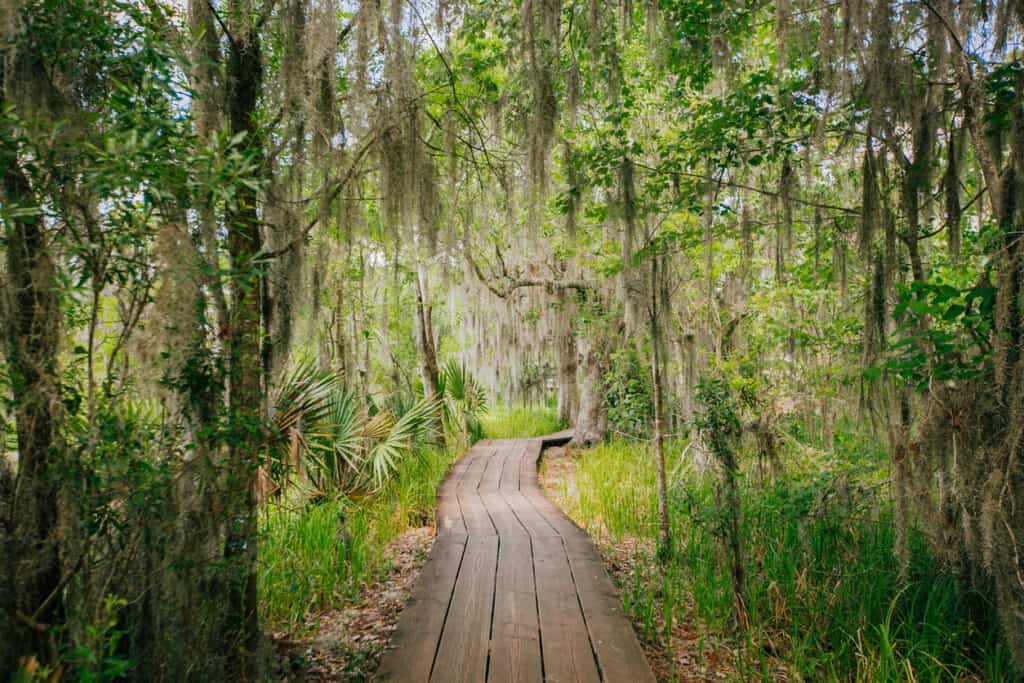
A swamp scene during a hike at the Jean Lafitte National Historical Park and Preserve near New Orleans, Louisiana.
©iStock.com/Rebecca Todd
The U.S. is home to some very large swamps. Getting precise measurements for these gigantic wetlands is difficult. As a result, some measures of the swamps on this list may be off, especially if the swamplands are naturally shrinking or being drained.
Still, the list contains five of the largest swamps even if their size and placement on the list are disputable. With that said, consider five massive swamps found in the U.S.!
5. Okefenokee Swamp

Green lily pads in the Okefenokee swamp National Wildlife Refuge near Folkston, Georgia.
©Bob Pool/Shutterstock.com
| Location | Size |
|---|---|
| Georgia and Florida | 683 square miles |
The Okefenokee Swamp stretches across the border from Georgia to Florida. The majority of the swamp is in Georgia, though. Okefenokee is famous for being the largest blackwater swamp in North America as well as one of the largest swamps in the United States.
A blackwater swamp occurs when tannins from dead vegetation seep into the water and make it dark, almost the color of black tea. Called the “Land of the Trembling Earth”, people journey to this swamp to see the various creatures that call the swamp home using bikes and boats to explore.
4. The Great Dismal Swamp
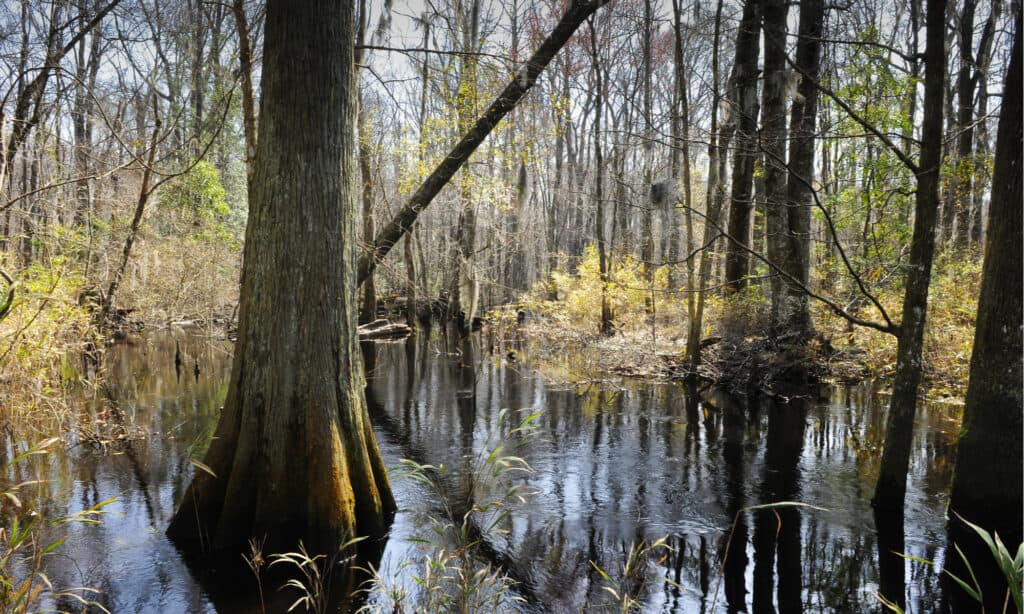
The Great Dismal Swamp is located near the coast of the Atlantic Ocean.
©Don Fink/Shutterstock.com
| Location | Size |
|---|---|
| Virginia and North Carolina | 750 square miles |
The Great Dismal Swamp is a large coastal swamp that stretches between the southeast part of Virginia into the northeastern part of North Carolina. The swamp’s estimated size these days is about 750 square miles. However, it was once almost twice that size.
The swamp is home to over 40 species of mammals along with 300 birds, and many other creatures. The Great Dismal Swamp is a coastal plain swamp, and it’s not located near a river. However, it does have a very large natural lake called Lake Drummond at the center.
Although the ecosystem was negatively affected by logging, the Great Dismal Swamp National Wildlife Refuge was established in the 1970s to help preserve the area.
3. Green Swamp
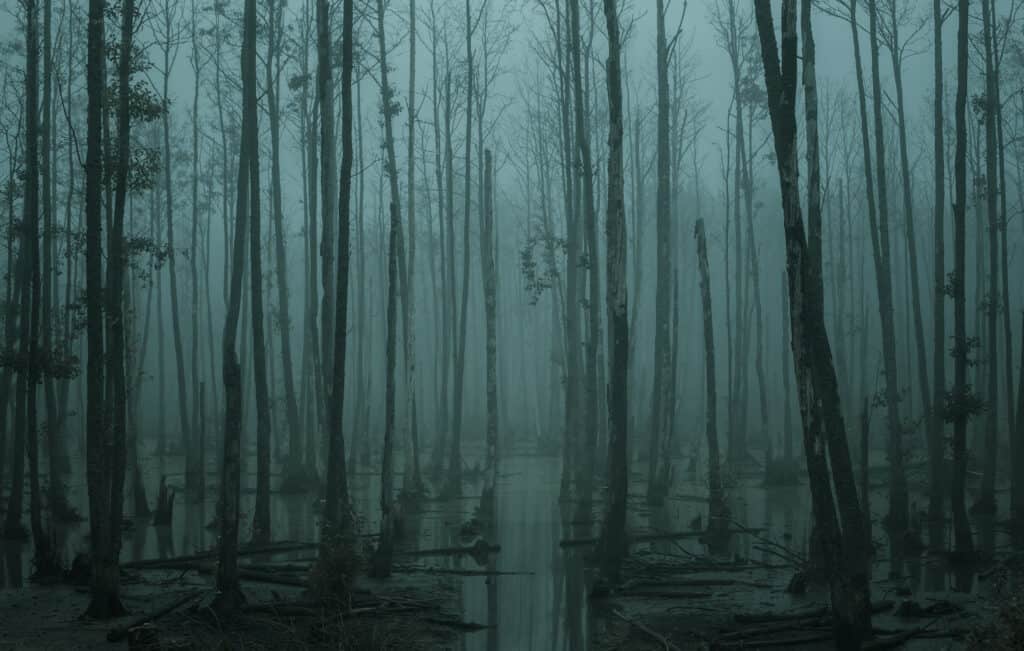
The Green Swamp is another large wetland in Florida.
©rangizzz/Shutterstock.com
| Location | Size |
|---|---|
| Florida | 825 square miles |
The Green Swamp is located in central Florida and measures about 825 square miles in size. This swamp is bordered by Interstate 27 to the east and Dade City to the west. The swamp contains over 300 species of animals. More importantly, the swamp holds the headwaters of major rivers including the Ocklawaha, Peace, Withlacoochee, and Hillsborough. Also, this swamp plays a very important role in the Florida aquifer, providing water for Florida’s many residents and visitors.
2. Big Cypress National Preserve

The Big Cypress National Preserve is a vast swamp in Florida west of Miami and just north of the Everglades.
©VIKVAD/Shutterstock.com
| Location | Size |
|---|---|
| Florida | 1,125 square miles |
The Big Cypress National Preserve is a vast swamp in Florida. Located in southern Florida, the preserve is west of Miami and just north of the Everglades.
You may have noticed that this list containing some of the largest swamps in the United States left out does not contain the Everglades as a swamp. Strictly speaking, the Everglades is not entirely a swamp. They are very significant wetlands, though.
Meanwhile, the Big Cypress National Preserve is a swamp covered in a cypress forest. The area is well-known for its large size as well as the biodiversity of the animals that live in the area. Alligators, crocodiles, snakes, bears, cougars, and other animals live in this area.
1. Atchafalaya Basin (Atchafalaya Swamp)

Bald cypress trees can be found in the state of Louisiana.
©lazyllama/Shutterstock.com
| Location | Size |
|---|---|
| Louisiana | 2,201 square miles |
The Atchafalaya Basin is the largest river swamp in the United States. The swamp is located in the south-central part of Louisiana, and it is known for being forested by bald cypress trees.
The swamp is home to multitudes of plants and animals, and it even serves as a nesting area for 300 species of migratory birds.
Sadly, the wetlands are shrinking at a rate of almost 30 square miles per year. Between human activities and the changing course of the Mississippi River, the swamp is losing significant amounts of area.
Swamplands Are in Dire Straits
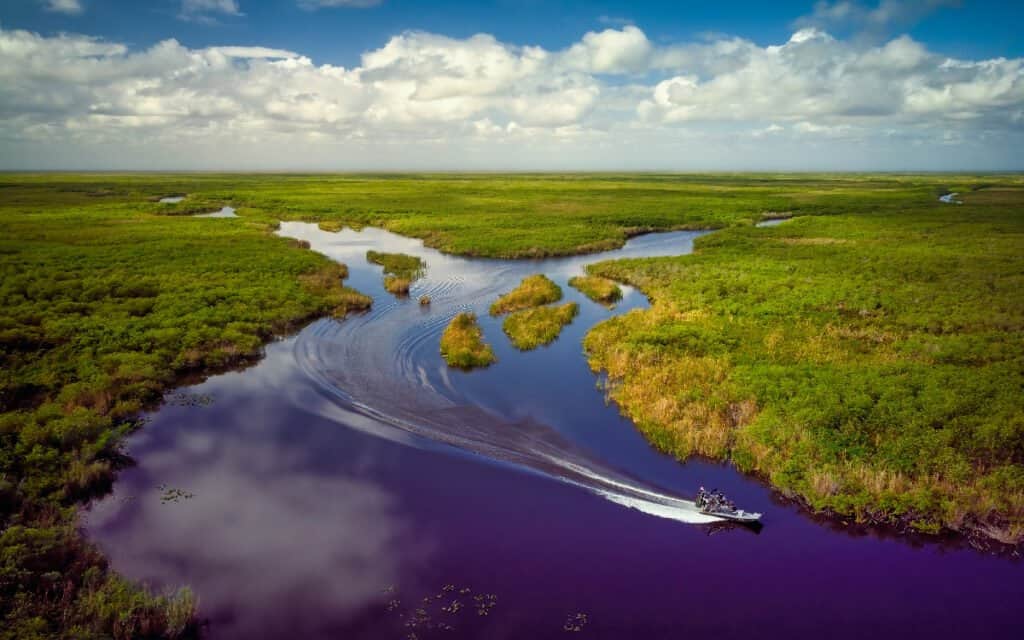
Swamps and wetlands serve important ecological roles and must be preserved.
©iStock.com/Robert DelVecchio – OcuDrone
Having listed the largest swamps in the United States, it’s important to consider the dangers facing them. Many of the swamps on this list have been significantly impacted by human activities such as agriculture, pollution, urban development, and more.
These actions threaten natural areas and put many species of animals and plants in jeopardy. Although the short-term benefits of developing swampy areas are enticing, the detriment to other lifeforms is severe. Loss of habitat is one of the greatest threats to species in the United States. Draining or altering large swamp environments, like the Great Black Swamp in Ohio, Indiana, and Michigan, also results in increased flooding and erosion while also negatively impacting water quality from agricultural runoff.
The stakes are high, but it’s not too late to do more to preserve these wetlands.
Summary Of The 5 Largest Swamps In The United States
| Rank | Swamp | Size in Square Miles | Location |
|---|---|---|---|
| 5 | Okefenokee Swamp | 683 | Georgia & Florida |
| 4 | The Great Dismal Swamp | 750 | Virginia & North Carolina |
| 3 | Green Swamp | 825 | Florida |
| 2 | Big Cypress National Preserve | 1,125 | Florida |
| 1 | Atchafalaya Basin (Atchafalaya Swamp) | 2,201 | Louisiana |
The photo featured at the top of this post is © iStock.com/indigojt
Thank you for reading! Have some feedback for us? Contact the AZ Animals editorial team.






